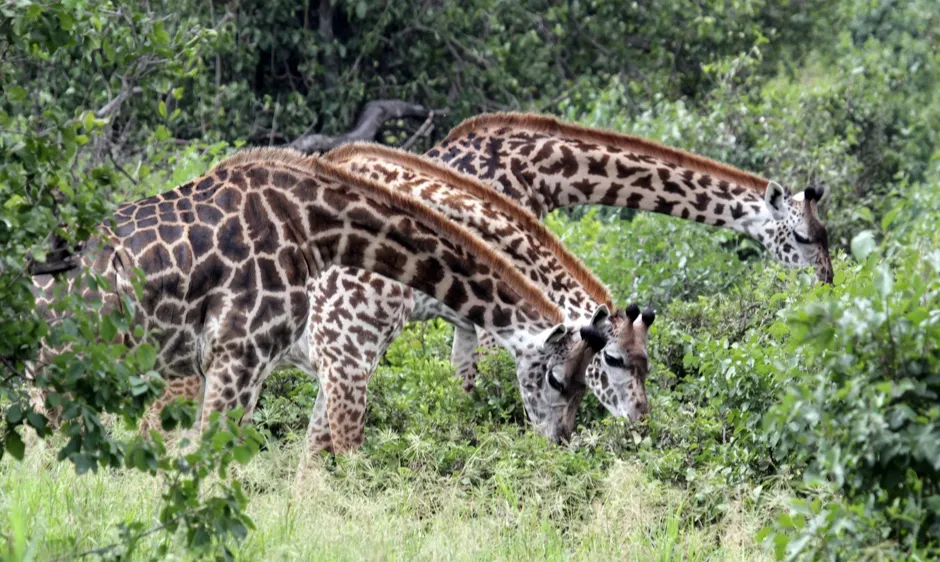Sisters are doin’ it for themselves! Female giraffes that form herds with other females have a much higher chance of survival than less social animals, a study at the University of Zurich has found.
Even though giraffe group formations are very fluid, and can even change several times throughout the day, adult females maintain many specific friendships throughout their lives.
To investigate the effects of these friendships, the team studied the behaviour of wild free-ranging giraffes in Tanzania over five years using algorithms similar to those used by social media analysts, paying special attention to the different animals’ levels of sociability.

“Grouping with more females, called gregariousness, is correlated with better survival of female giraffes, even as group membership is frequently changing,” said the study’s co-author and University of Zurich PhD candidate Monica Bond.
“This aspect of giraffe sociability is even more important than attributes of their non-social environment such as vegetation and nearness to human settlements.
“It seems to be beneficial for female giraffes to connect with a greater number of others and develop a sense of larger community.”
Read more about giraffes:
- Study hopes to reveal the secrets of giraffe evolution
- In pictures: The moment Kenyan conservationists rescued a marooned giraffe by boat
- What noise does a giraffe make?
Aside from poaching, the main causes of adult female giraffes dying are likely to be disease, stress or malnutrition.
Living in larger groups enables the giraffes to share information about the highest quality food sources, spread the workload of caring for their young, and repel the unwanted advances of male giraffes – all factors that can lower stress levels and help them to live longer lives, the team say.
The study is the latest to be published from a decade-long research project involving giraffes found in the Tarangire region of Tanzania. The area studied by the project spans more than 1,000 km2 and includes multiple groups of giraffes each with somewhere between 60 and 90 adult female members – the biggest study of its kind to date.
Reader Q&A: Why do giraffes have purple tongues?
Asked by: Emma-Louise Halliday, Bedford
If you’ve ever been lucky enough to be licked by a giraffe, you’ll notice that their 50cm-long tongues can appear purple, bluish or almost black in colour. This is due to the density of dark ‘melanin’ colour pigments in them.
There’s still no definitive explanation for this, but the leading theory is that the melanin provides extra UV protection, preventing their delicate tongues from getting sunburnt as they feed up high.
Read more: